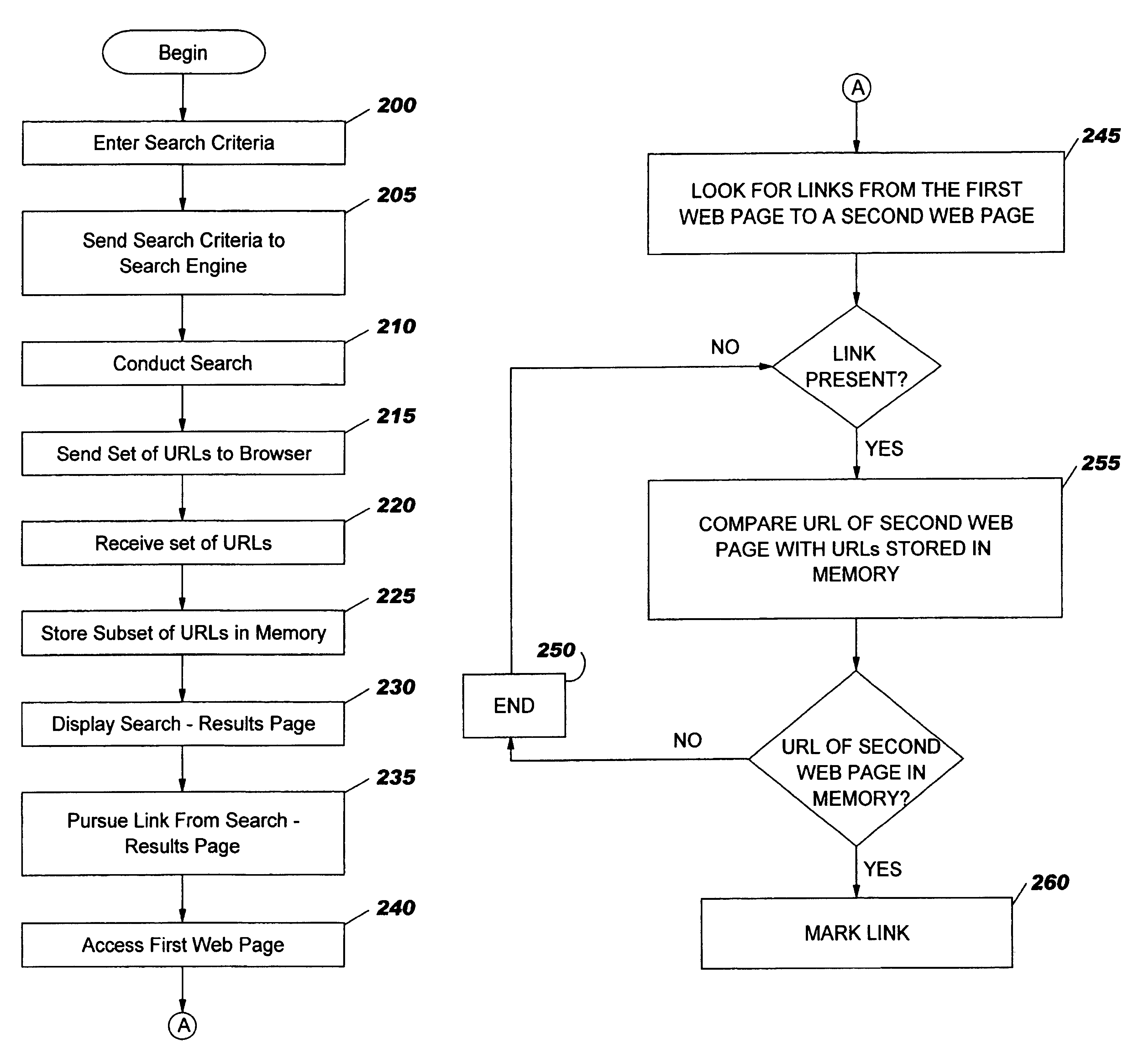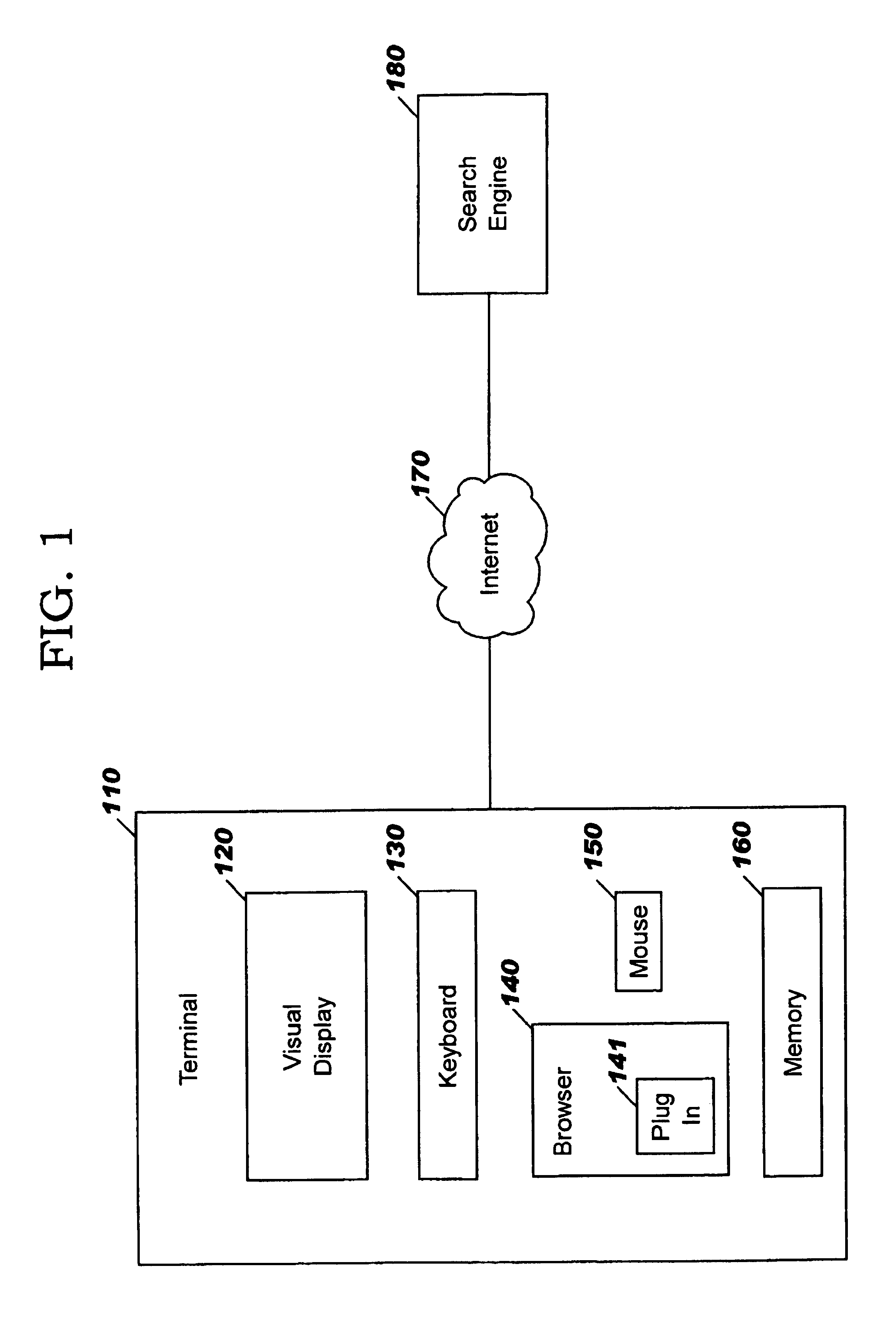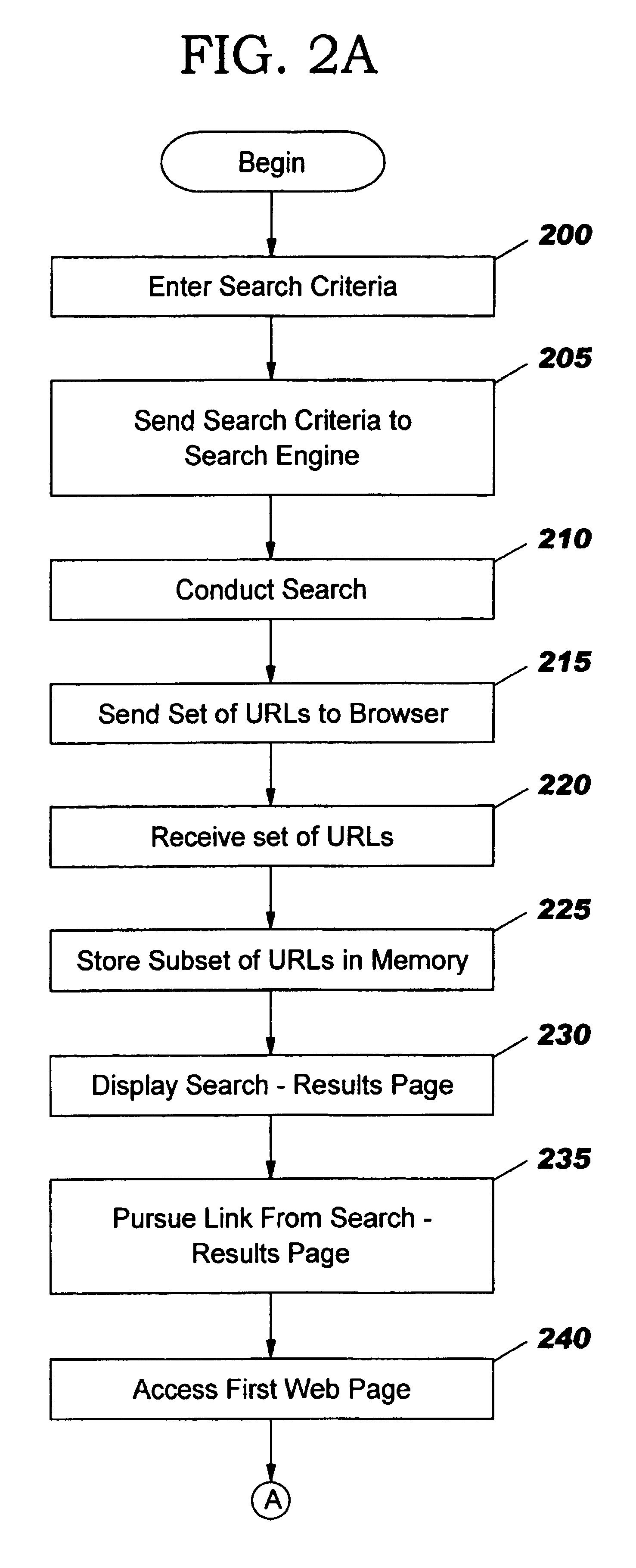Identifying links of interest in a web page
a technology of web pages and links, applied in the field of identifying links of interest, can solve the problems of inability to gain the full benefit of the wealth of information, inability to determine with any degree of confidence, and inability to meet the needs of searchers, so as to improve the efficiency of searcher navigation
- Summary
- Abstract
- Description
- Claims
- Application Information
AI Technical Summary
Benefits of technology
Problems solved by technology
Method used
Image
Examples
first embodiment
[0019]FIG. 2 shows aspects of the operation of the invention. Using the keyboard 130 or other input means, the searcher 100 enters search criteria such as keywords and associated logical operations into the browser 140 (step 200). The browser 140 sends the search criteria to the search engine 180 (step 205). The search engine 180 conducts a search, looking for pages of the World Wide Web that satisfy the search criteria (step 210). Upon completion of the search, the search engine 180 sends, to the browser 140, a set of URLs of web pages the search engine 180 has found that satisfy the search criteria (step 215). In practice, the search engine 180 may find a very large number of URLs associated with web pages that satisfy the search criteria. For this reason, the number of URLs returned to the browser 140 by the search engine 180 may be capped, for example at a maximum of 1000 URLs.
[0020]The browser 140 receives the set of URLs found by the search engine 140 (step 220), and stores a ...
second embodiment
[0025]FIG. 3 shows aspects of the operation of the invention. The browser 140 accesses a first web page specified by the searcher 100 (step 300). The browser 140 then examines the first web page, looking for a link from the first web page to a second web page (step 305). If no such link is found, the process ends (step 310).
[0026]Otherwise (i.e., a link is found from the first web page to a second web page), the browser 140 accepts search criteria entered by the searcher 100 (step 315). It is important to note that the step of accepting search criteria from the searcher 100 (step 315) may occur earlier in the operation of the present invention. The browser 140 sends the search criteria and the URL that identifies the second web page to the search engine 180 (step 320), in order that the search engine 180 might determine whether the second web page satisfies the search criteria.
[0027]The search engine 180 determines whether the second web page satisfies the search criteria.(step 325)...
PUM
 Login to View More
Login to View More Abstract
Description
Claims
Application Information
 Login to View More
Login to View More - R&D
- Intellectual Property
- Life Sciences
- Materials
- Tech Scout
- Unparalleled Data Quality
- Higher Quality Content
- 60% Fewer Hallucinations
Browse by: Latest US Patents, China's latest patents, Technical Efficacy Thesaurus, Application Domain, Technology Topic, Popular Technical Reports.
© 2025 PatSnap. All rights reserved.Legal|Privacy policy|Modern Slavery Act Transparency Statement|Sitemap|About US| Contact US: help@patsnap.com



